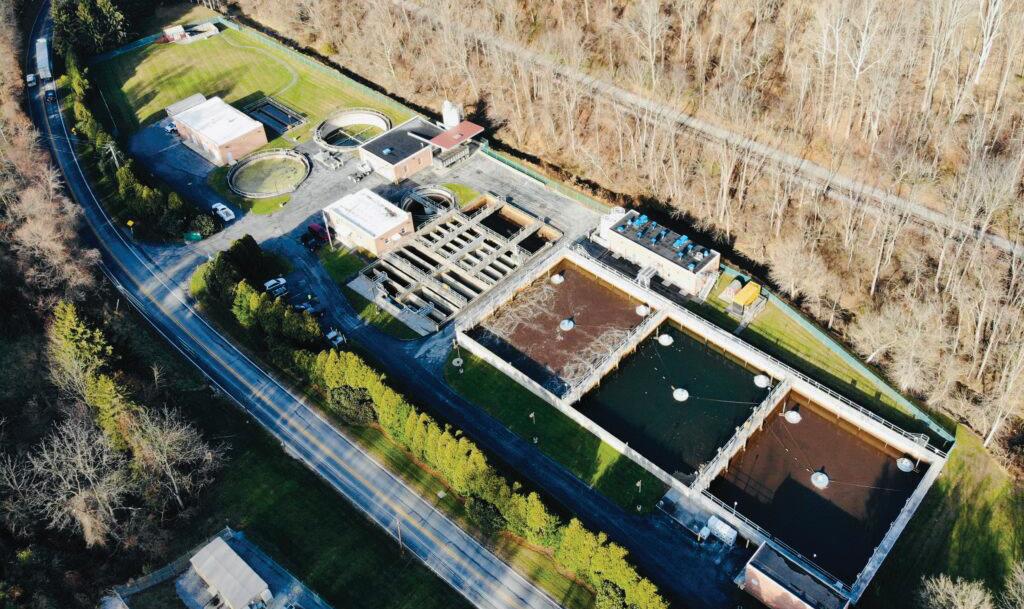
3 minute read
MAKING SENSE OF INDUSTRIAL NETWORKS WASTEWATER APPLICATION
The New Freedom wastewater treatment plant in southern Pennsylvania needed to upgrade its control system as the existing controls—based on a DOS binary system—had become obsolete. Finding replacement parts and programmers for the system became increasingly di cult and there was a growing potential for prolonged failures that could be disastrous to both water quality and the surrounding environment.
John Smith, plant director at New Freedom, wanted to avoid these problems while executing the upgrade with minimal disruption to the plant’s biological and chemical treatment processes. He also wanted to replace the obsolete controls with a network of reliable, redundant PLCs capable of taking the plant’s sequential batch reactor process into the future.
For these reasons, he and his staff settled on a plant-wide, fiber-optic ring connecting redundant RFC 460R controllers from Phoenix Contact. The controllers use the Profinet Media Redundancy Protocol (MRP) to provide fault recovery within milliseconds and which can connect remote I/O stations on the ring.
The migration plan—designed to minimize any interruption in the plant’s processes—was to install the new controls while the older ones continued to operate. Then, once the new controls were tested, the old controls would be removed and the new ones would go into operation as the plant’s primary controls.
The resilience provided by this architecture proved itself from the very beginning. When a fatal error rendered the old PLC inoperable during the site acceptance test, Phoenix Contact’s engineering services team was able to bring the new control system online quickly without significant interruption in the treatment process.
Besides enhancing the network’s resiliency, the Profinet protocol on the new PLCs also expands the universe of peripheral systems that New Freedom can add to the control network. For example, single-purpose displays have already been replaced with touch-screen HMIs. New Freedom can also now explore the implementation of industrial Internet of things (IIoT) and artificial intelligence technologies for predictive maintenance and energy management.
2-wire Ethernet (10BASE-T1L) that brings both power and communication to instruments at 10 Mbit/s over cables as long as 1 km,” explains Bowne. “The richness and transparency of Ethernet can now be utilized down to the field level in process automation.”
Open by design
The ability of Profinet to accommodate a mix of devices from diverse suppliers has been a leading factor driving the protocol’s proliferation across industry.
“Building a factory today requires a diverse mix of devices,” explains Bowne. “With Profinet, users are free to select best-of-breed solutions from their vendors of choice and can rest assured that these products will communicate properly.”
Vendor agnosticism was part of the plan from the beginning, even though Profinet was originally conceived as the industrial communications protocol for Siemens products.
“Siemens understands that users don’t want to be tied to one specific vendor or a proprietary technology,” says Torsten Paulsen, general manager of the Profi Interface Center, Siemens Industry Inc.
For this reason, the company chose not to pursue what Paulsen describes as the easy route when industrial Ethernet emerged in the early 2000s. Rather than mapping its well-established Profibus protocol into existing Ethernet protocols like TCP/IP and UDP/IP, Siemens instead decided to develop the protocol as an open and vendor-independent technology.
It did so by founding Profibus and Profinet International, a consortium that manages the technology and its evolution. “After the original patents were written and finalized, the intellectual property rights were handed over to PI,” reports Bowne. “Any company that joins PI as a member, anywhere in the world, is granted rights to these patents.” PI is now governed by a board of directors composed of representatives of the member companies.
These member companies joined and supported this and similar consortia for the same reasons that Siemens organized PI. Phoenix Contact, for example, joined PI in 2004 to develop a migration path to an Ethernet platform for its own InterBus fieldbus. “The choice of going it alone with our own Ethernet-based platform made no sense,” says Arnold O ner, strategic marketing manager, automation infrastructure at Phoenix Contact.
Like other member companies, Phoenix Contact allocates resources to support PI. This includes selecting employees to sit on the governing board of directors and participating on various technical committees and working groups. “Our employees are still working at the Phoenix Contact o ces,” explains O ner. “They do in-house testing to verify




